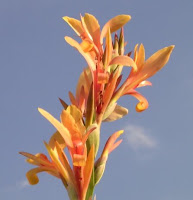It is important that we hand over to the next generation as much viable plant material as possible. This allows them the opportunity to breed different strains, and as science progresses, to do things that we of this generation cannot imagine. This will probably include the ability to easily remove virus from affected plants, and put varieties back into gardendom again.
Our commercial nurseries understandably concentrate their attention on maintaining desirable and fashionable plants that are easily propagated and cultivated. Botanical gardens concentrate on preserving the wild species, and very few conserve garden cultivars.
With a projected two thirds of the world's plant species being lost by the end of the 21st century, the importance of home gardeners and enthusiastic collectors in contributing to plant conservation cannot be underestimated.
Consequences for the loss of these plants are enormous, including the elimination of valuable genes that have never been fully researched. We need to retain and record as many cultivated varieties of plants as possible.
This is why here in the UK the National Council for the Conservation of Plants and Gardens (NCCPG) was founded and their policy is to preserve all cultivars for future generations, and similar organisations exist in many other developed countries of the world.
At Claines Canna we have recently been criticised publicly for not immediately destroying any specimen that comes into our possession that is thought to have virus. When foliage is sent to the labs for testing there are always a few surprises. Specimens thought to be virus-free are found to be affected, and others that seem to be affected are reported as being free from virus. Laboratory testing is the only sure way forward.
The statement "If it looks like virus, then it is virus" that is currently being pedalled as wisdom is an over simplification, as is confirmed by laboratory testing. We have ourselves been down the route of relying on visual inspection, after all it was all we had at that time, but it is not infallible.
In the meantime we will continue with our policy of segregating our specimens into those that highly probably have virus, suspects, those being treated and those that are confirmed as virus-free. These are in separated areas, so that there is no contact. In addition, new specimens are put into quarantine until they can be categorised.
I understand that several other serious collectors around the world are following similar hygiene practices and I believe that it is the only sensible approach, if we are not to loose valuable DNA from our heritage but also to grow and sell virus-free Cannas.
I understand that several other serious collectors around the world are following similar hygiene practices and I believe that it is the only sensible approach, if we are not to loose valuable DNA from our heritage but also to grow and sell virus-free Cannas.
Finally, I believe that we need to stop being obsessed about the subject of virus as long as we continue to make steady progress with supplies of clean material. Otherwise, we are in danger of frightening away new customers and recruits to the Canna genus who will get the impression that virus in Cannas is worse than in others. Many other genus have far worse problems to deal with.
-Action Plan for Conservation of Plants in Cultivation, from NCCPG and RHS
-Australian Network for Plant Conservation
-National Council for the Conservation of Plants and Gardens (NCCPG)


No comments:
Post a Comment